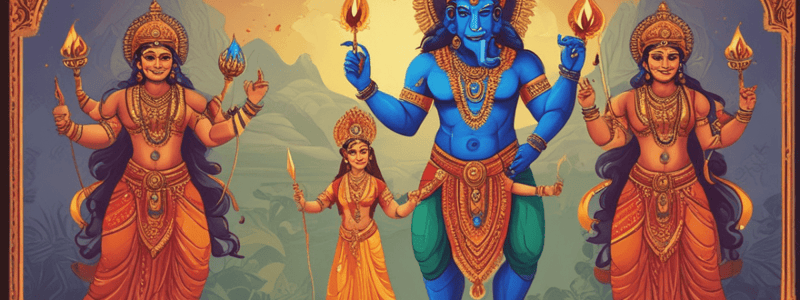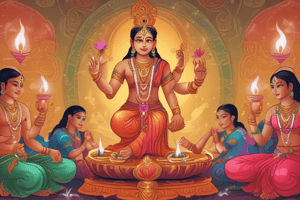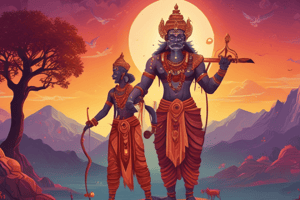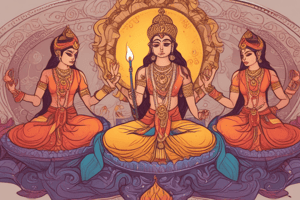Podcast
Questions and Answers
The last chapter of Valmiki's Ramayana details a 'happily ever after' section where Ram's reign is described for 10,000 years with prosperity and peace.
The last chapter of Valmiki's Ramayana details a 'happily ever after' section where Ram's reign is described for 10,000 years with prosperity and peace.
True (A)
The Uttar Kand in the Ramayana promotes casteism and patriarchy, likely added later by certain groups for their agenda.
The Uttar Kand in the Ramayana promotes casteism and patriarchy, likely added later by certain groups for their agenda.
True (A)
Evidence is presented in the content to show discrepancies between Valmiki's original Ramayana and the added Uttar Kand.
Evidence is presented in the content to show discrepancies between Valmiki's original Ramayana and the added Uttar Kand.
True (A)
The speaker argues that the Uttar Kand should be considered a continuation of the original Ramayana.
The speaker argues that the Uttar Kand should be considered a continuation of the original Ramayana.
Writers and poets often avoid using exaggeration in literature to maintain historical accuracy.
Writers and poets often avoid using exaggeration in literature to maintain historical accuracy.
Historical evidence proves that the battle between 300 Spartans and 1 million Persians in the movie '300' was depicted accurately without any exaggeration.
Historical evidence proves that the battle between 300 Spartans and 1 million Persians in the movie '300' was depicted accurately without any exaggeration.
An article mentions Maharana Pratap carrying weapons weighing a total of 360 kg, which is physically possible based on historical records.
An article mentions Maharana Pratap carrying weapons weighing a total of 360 kg, which is physically possible based on historical records.
The speaker in the content emphasizes that many religious and mythological stories are meant to be taken literally.
The speaker in the content emphasizes that many religious and mythological stories are meant to be taken literally.
The speaker criticizes those who use religious texts like Manusmriti to promote violence, emphasizing that true Dharma involves characteristics like non-violence, truth, and helping others.
The speaker criticizes those who use religious texts like Manusmriti to promote violence, emphasizing that true Dharma involves characteristics like non-violence, truth, and helping others.
Flashcards are hidden until you start studying




